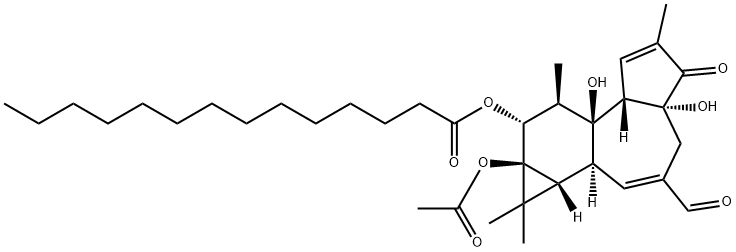CYCLOHEPTENE
- CAS NO.:628-92-2
- Empirical Formula: C7H12
- Molecular Weight: 96.17
- MDL number: MFCD00004156
- EINECS: 211-060-4
- SAFETY DATA SHEET (SDS)
- Update Date: 2025-01-27 09:38:02

What is CYCLOHEPTENE?
Description
Cycloheptene is a flammable, colorless, oilyliquid. Molecular weight=96.2; Boiling point=115℃;Flash point=27℃ (also listed at 23℃). HazardIdentification (based on NFPA-704 M Rating System):Health 1, Flammability 3, Reactivity 0. Insoluble in water.
Chemical properties
CLEAR COLOURLESS LIQUID
The Uses of CYCLOHEPTENE
Cycloheptene was used in one-pot synthesis of 1,2/3-triols from the allylichydroperoxides catalyzed by zeolite-confined osmium(0) nanoclusters. It is a raw material in organic chemistry and a monomer in polymer synthesis. Copper (1) triflate catalyzes the photodimerization of the simple nonconjugated unstrained olefins, cyclopentene, cyclohexene, and cycloheptene, but not cyclooctene or acyclic olefins.
What are the applications of Application
Cycloheptene is a cycloalkene and monomer used for polymer synthesis
Synthesis Reference(s)
The Journal of Organic Chemistry, 41, p. 896, 1976 DOI: 10.1021/jo00867a038
General Description
A colorless oily liquid. Insoluble in water and less dense than water. Flash point 70°F. Vapors heavier than air. Inhalation of high concentrations may have a narcotic effect. Used to make other chemicals.
Air & Water Reactions
Highly flammable. Insoluble in water.
Reactivity Profile
CYCLOHEPTENE may react vigorously with strong oxidizing agents. May react exothermically with reducing agents to release hydrogen gas. In the presence of various catalysts (such as acids) or initiators, may undergo exothermic addition polymerization reactions.
Health Hazard
Inhalation or contact with material may irritate or burn skin and eyes. Fire may produce irritating, corrosive and/or toxic gases. Vapors may cause dizziness or suffocation. Runoff from fire control or dilution water may cause pollution.
Potential Exposure
Cycloheptene may be used in organicsynthesis
First aid
If this chemical gets into the eyes, remove anycontact lenses at once and irrigate immediately for at least15 min, occasionally lifting upper and lower lids. Seek medical attention immediately. If this chemical contacts theskin, remove contaminated clothing and wash immediatelywith soap and water. Seek medical attention immediately. Ifthis chemical has been inhaled, remove from exposure,begin rescue breathing (using universal precautions, including resuscitation mask) if breathing has stopped and CPR ifheart action has stopped. Transfer promptly to a medicalfacility. When this chemical has been swallowed, get medical attention. Give large quantities of water and inducevomiting. Do not make an unconscious person vomit.
Storage
Color Code—Red: Flammability Hazard: Store ina flammable liquid storage area or approved cabinet awayfrom ignition sources and corrosive and reactive materials.Cycloheptene must be stored to avoid contact with strongoxidizers (such as chlorine, bromine, and fluorine), sinceviolent reactions occur. Store in tightly closed containers ina cool, well-ventilated area. Sources of ignition, such assmoking and open flames, are prohibited where cycloheptene is used, handled, or stored in a manner that could create a potential fire or explosion hazard. Metal containersinvolving the transfer of=gallons or more of cyclohepteneshould be grounded and bonded. Drums must be equippedwith self-closing valves, pressure vacuum bungs, and flamearresters. Use only nonsparking tools and equipment, especially when opening and closing containers of cycloheptene.Wherever cycloheptene is used, handled, manufactured, orstored, use explosion-proof electrical equipment andfittings.
Shipping
Cycloheptene must be labeled “FLAMMABLELIQUID.” It falls in Hazard Class 3 and Packing Group II.
Incompatibilities
Contact with strong oxidizers may causea fire or explosion hazard.
Properties of CYCLOHEPTENE
| Melting point: | -56 °C |
| Boiling point: | 112-114.7 °C (lit.) |
| Density | 0.824 g/mL at 25 °C (lit.) |
| refractive index | n |
| Flash point: | 20 °F |
| storage temp. | Flammables area |
| form | Liquid |
| color | Clear colorless |
| Water Solubility | Insoluble in water. |
| BRN | 1900884 |
| CAS DataBase Reference | 628-92-2(CAS DataBase Reference) |
| EPA Substance Registry System | Cycloheptene (628-92-2) |
Safety information for CYCLOHEPTENE
| Signal word | Danger |
| Pictogram(s) |
 Flame Flammables GHS02 |
| GHS Hazard Statements |
H225:Flammable liquids |
| Precautionary Statement Codes |
P210:Keep away from heat/sparks/open flames/hot surfaces. — No smoking. |
Computed Descriptors for CYCLOHEPTENE
New Products
4,4-Difluoropiperidine hydrochloride tert-butyl 9-methoxy-3-azaspiro[5.5]undecane-3-carboxylate Indole Methyl Resin N-Isopropylurea N,N-Dicyclohexylcarbodiimide(DCC) MELDRUMS ACID 5-METHYLISOXAZOLE-4-CARBOXYLIC ACID Magnessium Bis glycinate Zinc ascorbate 1-bromo-2-butyne 2-acetamidophenol 9(10H)-anthracenone Erythrosin B, 4-Piperidinopiperidine 2-((4-morpholinophenylamino) (methylthio) methylene) malononitrile 2,4-dihydroxybenzaldehyde 3-(4-morpholinophenylamino)-5-amino-1H-pyrazole-4-carbonitrile Methyl 2-methylquinoline-6-carboxylate 2,6-dichloro-4-nitropyridine 4-Bromo-2-chlorobenzonitrile 2-(benzylamino)acetic acid hydrochloride 4-(tert-Butoxycarbonylamino)but- 2-ynoic acid 3,4-dihydro-2H-benzo[b][1,4]dioxepine 1-Phenyl-1-cycloprppanecarboxylicacidRelated products of tetrahydrofuran








You may like
-
 Cycloheptene CAS 628-92-2View Details
Cycloheptene CAS 628-92-2View Details
628-92-2 -
 Cycloheptene 95% CAS 628-92-2View Details
Cycloheptene 95% CAS 628-92-2View Details
628-92-2 -
 Cycloheptene CAS 628-92-2View Details
Cycloheptene CAS 628-92-2View Details
628-92-2 -
 3-(4-amino-1-oxoisoindolin-2-yl)-1-methylpiperidine-2,6-dione 98%View Details
3-(4-amino-1-oxoisoindolin-2-yl)-1-methylpiperidine-2,6-dione 98%View Details -
 20677-73-0 (2,2-diethoxyethyl)methylamine 98%View Details
20677-73-0 (2,2-diethoxyethyl)methylamine 98%View Details
20677-73-0 -
 3-(4-(hydroxyamino)-1-oxoisoindolin-2-yl)piperidine-2,6-dione 98%View Details
3-(4-(hydroxyamino)-1-oxoisoindolin-2-yl)piperidine-2,6-dione 98%View Details -
 57381-49-4 2-bromo-4-chlorobenzonitrile 98%View Details
57381-49-4 2-bromo-4-chlorobenzonitrile 98%View Details
57381-49-4 -
 4,6-dichloropyrimidine-5-carbaldehyde 98%View Details
4,6-dichloropyrimidine-5-carbaldehyde 98%View Details
5305-40-8
